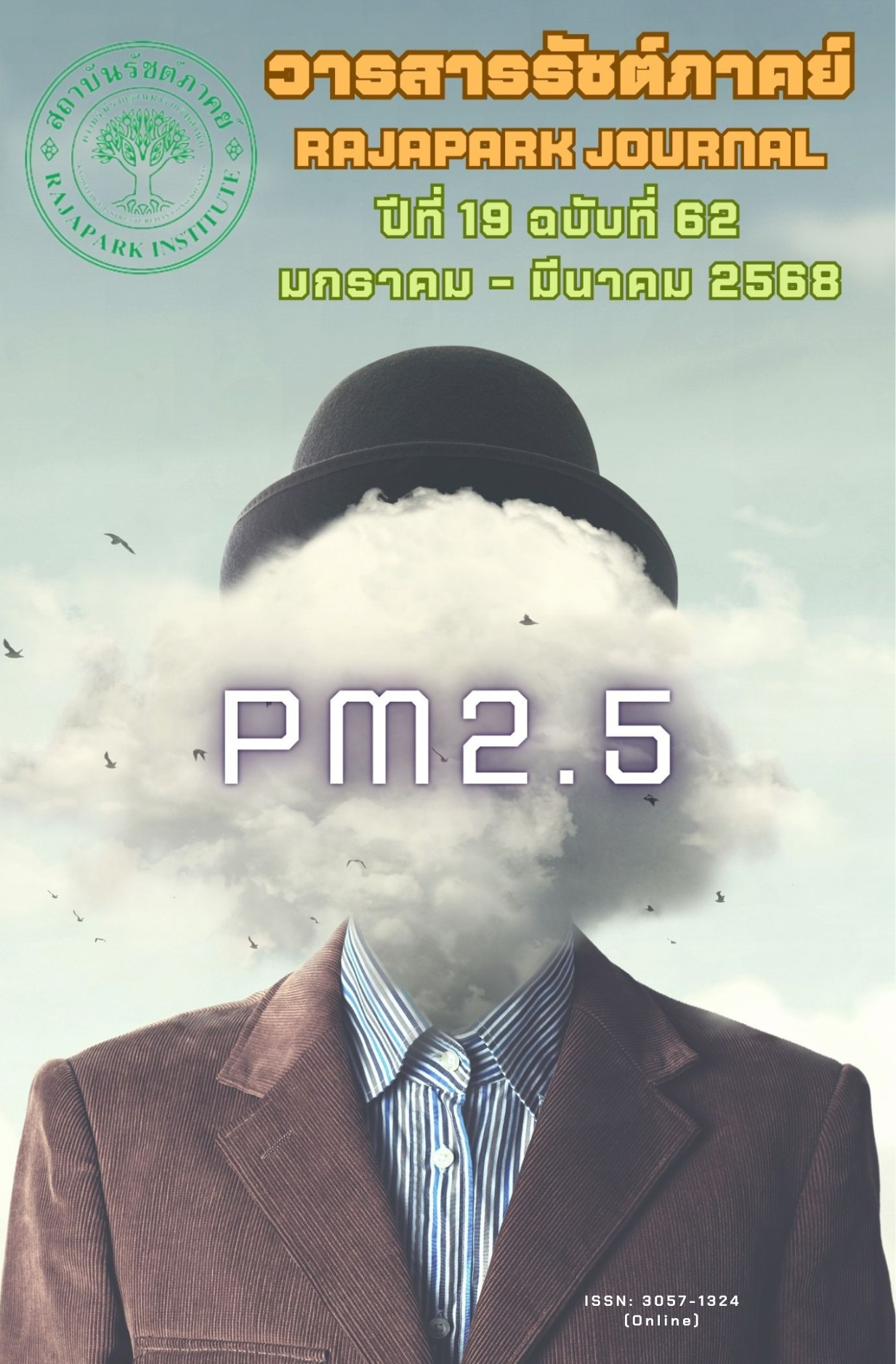Shopping Center Management Concepts for Customer Attractiveness
Main Article Content
Abstract
The academic article aimed at a concept for managing shopping centers that focuses on creating engaging experiences that meet customer needs, emphasizing improvements in convenience, comfort, diversity, entertainment, mall essence, and luxury. The study's findings reveal that modern space design, a pleasant atmosphere, cleanliness, easy accessibility, diverse activities, and technology to enhance service efficiency increase customer satisfaction and encourage repeat visits.
Article Details

This work is licensed under a Creative Commons Attribution-NonCommercial-NoDerivatives 4.0 International License.
Views and opinions appearing in the Journal it is the responsibility of the author of the article, and does not constitute the view and responsibility of the editorial team.
References
Almarashdeh, I., Jaradat, G., Abuhamdah, A., Alsmadi, M., & Alazzam, M. B. (2019). The difference between shopping online using mobile apps and website shopping: A case study of service convenience. International Journal of Computer Information Systems and Industrial Management Applications, 11, 151-160. https://cspub-ijcisim.org/index.php/ijcisim/article/view/434
Alrhaimi, S. A., & Habboush, T. (2015). Entertainment in Jordanian malls. International Business Research, 8(7), 78. DOI:10.5539/ibr.v8n7p78
Andrada, M. F., & Rivera, J. M. M. (2020). A facilities planning approach on tenant mix and positioning of a community shopping mall. In Proceedings of the International Conference on Industrial Engineering and Operations Management Dubai, UAE, March 10-12, 2020,
(pp. 1732-1740). http://www.ieomsociety.org/ieom2020/papers/273.pdf
Attakorn, S. (2019). Natural environment and comfort condition in semi-open atrium: Case studies of semi-open shopping malls in Bangkok. Asian Creative Architecture, Art and Design, 29(2), 60-74. https://so04.tci-thaijo.org/index.php/archkmitl/article/view/200141
Ayvaz, B. (Jun 2024). Contemporary interior design approaches in luxury stores: A comparative analysis based on three case studies. In book: International Academic Studies in Architecture, Planning and Design (pp.69-84). Serüven Yayınevi.
Bailey, M. (2015). Shopping for entertainment: malls and multiplexes in Sydney, Australia. Urban History, 42(2), 309-329. DOI: https://doi.org/10.1017/S0963926814000583
Baker, J., Grewal, D., & Parasuraman, A. P. (1994). The influence of store environment on quality inferences and store image. Journal of the Academy of Marketing Science, 22(4), 328-339. DOI:10.1177/0092070394224002
Baker, J., Levy, M., & Grewal, D. (1992). An experimental approach to making retail store environmental decisions. Journal of Retailing, 68(4), 445-460.
Bawa, R., Sinha, A. K., & Kant, R. (2019). Emerging mall culture and shopping behavior of young consumers. Advances in Anthropology, 9(3), 125-150. DOI: 10.4236/aa.2019.93010
Bitner, M. J. (1992). Servicescapes: The impact of physical surroundings on customers and employees. Journal of Marketing, 56(2), 57–71. https://doi.org/10.2307/1252042
Calvo-Porral, C., & Lévy-Mangín, J. P. (2018). Pull factors of the shopping malls: An empirical study. International Journal of Retail & Distribution Management, 46(2), 110-124. DOI:10.1108/IJRDM-02-2017-0027
Chantarayukol, P. (March 2019). Mixed use shopping mall as an attractiveness on customer behaviors in Bangkok, Thailand. Journal of Business and Retail Management Research (JBRMR), 14(1), 32-39. DOI:10.24052/JBRMR/V14IS01/ART-04
Chotipanich, S., & Issarasak, S. (2017). A study of facility management operation strategy in shopping malls: Insights from 4 top-class shopping malls in Bangkok. Property Management, 35(3), 236-253. DOI:10.1108/PM-07-2015-0029
Donovan, R.J., & Rossiter, J.R. (1982). Store atmosphere: An environmental psychology approach. Journal of Retailing, 58(1), 34-57.
Genç, R. (2019). Luxury shopping as a new opportunity for tourism market development. Journal of Tourism and Hospitality Education, 9, 1-8. DOI:10.3126/jthe.v9i0.23676
Grewal, D., Noble, S. M., Roggeveen, A. L., & Nordfalt, J. (2020). The future of in-store technology. Journal of the Academy of Marketing Science, 48, 96-113. https://doi.org/10.1007/s11747-019-00697-z
Humaira Ilyanni, Y., & Zaliza, A. (2024). Mall Essence’s Impact on Shopping Preferences in Small Cities. Journal Evolusi, 5(2), 1-13. https://journal.uptm.edu.my/index.php/evolusi/article/view/295
Hussain, M. M., & Siddiqui, D. A. (2019). Influence of shopping experience on shopping/convenience store selection. International Journal of Business Administration, 10(3), 74-89. https://ssrn.com/abstract=3381540
Ismail El-Adly, M. (2007). Shopping malls attractiveness: a segmentation approach. International Journal of Retail & Distribution Management, 35(11), 936-950. DOI:10.1108/09590550710828245
Jakom, A. O., Mawji, Z., & Awuor, E. (2024). Analysis of product, promotional tools and retailing on the tenant mix strategy of shopping centres: A case of the two rivers mall. International Journal of Research Publication and Reviews, 5(4), 4849-4870.
Kariya, T., Takada, H., & Yamamura, Y. (2023). Tenant portfolio selection for managing a shopping center. International Real Estate Review, 26(2), 143-171. https://www.gssinst.org/irer/wp-content/uploads/2023/08/vol26-no2-1_Tenant-Portfolio-Selection.pdf
Kyriaziz, A. N., & Cloete, C. E. (2018). Tenant mix in shopping centres: South Africa and the United Kingdom compared. Journal of Business and Retail Management Research (JBRMR), 12(2), 152-162. DOI:10.24052/JBRMR/V12IS02/TMISCSAATUKC
Le, N. (2020). Brand management in luxury marketing[Master’s thesis, CENTRIA University of Applied Sciences]. https://www.theseus.fi/bitstream/handle/10024/334141/Nguyen%20_%20Le.pdf?sequence=2
Makgopa, S. (2016). Determining consumers’ reasons for visiting shopping malls. Innovative Marketing, 12(2), 22-27. DOI:10.21511/im.12(2).2016.03
Memon, R. M., Talpur, B. D., Nazir, H., Kaka, Z. G., & Mahar, W. A. (2022). Easy movement facilities for users' comfort in shopping malls in Clifton, Karachi, Pakistan. Xi'an Shiyou Daxue Xuebao (Ziran Kexue Ban), 18(9), 37-51. https://orbi.uliege.be/handle/2268/294302
Nicolescu, L., & Tudorache, M. T. (2022). Human-computer interaction in customer service: the experience with AI chatbots a systematic literature review. Electronics, 11(10), 1579. https://www.mdpi.com/2079-9292/11/10/1579
Ortiz, L., & Arnold, H. (2018). From mall to mixed use. Economic Development Journal, 17(4), 15-20. https://www.iedconline.org/clientuploads/Economic%20Development%20Journal/EDJ_18_Fall_Ortiz-Arnold.pdf
Royal Institute of Thailand. (2011). https://dictionary.orst.go.th/
Sands, S., Oppewal, H., & Beverland, M. (2015). How in-store educational and entertaining events influence shopper satisfaction, Journal of Retailing and Consumer Services, 23, 9-20. DOI:10.1016/j.jretconser.2014.11.004
Sasmita, K. H., Soemardiono, B., & Noerwasito, V. T. (2020). Design criteria of modern shopping center building based on public pedestrian space. Journal of Architecture & Environment, 19(1), 11-36. https://iptek.its.ac.id/index.php/joae/article/viewFile/6511/4470
Wirtz, J., Holmqvist, J., & Fritze, M. P. (2020). Luxury services. Journal of Service Management, 31(4), 665-691. DOI:10.1108/JOSM-11-2019-0342
Xu, Y., Yiu, C. Y., & Cheung, K. S. (2022). Retail tenant mix effect on shopping mall’s performance. Marketing Intelligence & Planning, 40(2), 273-287. https://doi.org/10.1108/MIP-05-2021-0178
Ying, H.C., & Aun, A.N.B. (2019). Examining factors influencing consumer choice of shopping mall: A case study of shopping mall in Klang Valley, Malaysia. BERJAYA Journal of Services & Management, 11, 82-102.
Zoroğlu, F., & Gedik, G.Z. (2022). A field study on thermal comfort in the shopping malls in a temperate humid climate. A/Z: ITU Journal of Faculty of Architecture, 19(1), 103-118. DOI:10.5505/itujfa.2022.62582


